"This is our Indigenous food"
Makepeace Sitlhou investigates the meanings food takes amid an ongoing civil war. Photographs by George AK Neihsial.
Good morning, and welcome to Vittles! Today, Makepeace Sitlhou writes about the ethnic strife and civil conflict in Manipur in northeast India, and how the Kuki-Zo tribe’s ability to eat and produce food has been affected by continuing violence and neglect from the state.
Before we start, some news for all our international readers – particularly Canadians, who felt excluded by our capitulation to the American dollar. We have finally managed to sort a solution for international magazine orders, and Issue 1 is now available to preorder from anywhere in the world, including the EU. As this is our first run, and as we have self-funded the magazine, we are being cautious with how many copies we print, so we would highly recommend pre-ordering before April 24 if you wish to guarantee a copy.
Of course, we hope that the magazine will be stocked by as many of our favourite small bookshops and restaurants as possible, so for trade orders in the UK and abroad, please order via our distributor Antenne Books by emailing maxine@antennebooks.com and mia@antennebooks.com (or harass your local bookshop into ordering some copies!).
“This is our Indigenous food”
Makepeace Sitlhou investigates the meanings food takes amid an ongoing civil war.
When I met Thongkhohao Haokip on the very first day of 2025, he stepped out into the front yard of a temporary wooden house to greet me. ‘Welcome to Chandel district,’ the thirty-year-old said. His attitude suggested he had been living in the area all his life, but it had been less than a year since he relocated there following several months in temporary accommodation after the outbreak of the ongoing civil war in Manipur, one of India’s Northeastern states. The day I visited, Haokip was making ankamthu – fermented mustard leaves – which he sells through WhatsApp and Instagram. ‘This is our indigenous food,’ he told me assertively. The dish is central to the cuisine of Kuki-Zo tribes, the community to which Haokip belongs.
Before he arrived in Chandel, Haokip worked with his father in construction, but in Chandel, he turned to manufacturing ankamthu as a way to make a living and also enterprise his mother’s recipes. To make ankamthu, he sun-dries the mustard leaves, grinds them, and stores them in airtight containers under the sun to allow them to ferment. Traditionally, ankamthu is made using a wooden pestle and is ground by hand, but in the absence of this equipment, Haokip used an automated sugarcane crusher. After crushing, ‘the extract is then boiled over firewood until it forms a glycerine-like texture’, Haokip told me. Despite having few resources and being a small family-run operation, he got orders from all over India and his initial batch of ten kilograms sold out within months. ‘I think people were moved that this was produced on Kuki-Zo land, by internally displaced people,’ he said.
The war broke out in May 2023, with armed clashes between the dominant Meitei (who are also referred to simply as ‘Manipuri’ and live in the politically-central Imphal Valley) and minority Kuki-Zo tribal communities (who are often referred to, along with the Nagas, as ‘hill tribes’). On 13 February 2025, Manipur was brought directly under the central Narendra-Modi-led BJP government, and the state cabinet was dissolved. By this date, over 260 lives had been lost and 60,000 people, including Haokip and his family, had been displaced. ‘Our village is surrounded by Meitei villages on all sides,’ he told me, about escaping from his village in Churachandpur district in the first days of the war. ‘We made it out alive with nothing but the clothes on our back.’
Manipur has always been segmented into several identity-based territories, all of which are informally ruled by a cocktail of insurgent groups vying for a separate homeland, either within the Indian union or independent of it. Kuki-Zo tribes have always been doubly marginalised in the region: today, they have the smallest representation in the state assembly of the three main ethnic communities and their cultures are obscured by the state when it comes to language and cultural capital like traditional festivals. The current civil war was sparked by a Manipur High Court order, which recommended that the already-advantaged Meiteis should also be granted the special constitutional status of ‘Scheduled Tribes’ (ST). This status essentially gives the Meitei – a section of whom are dominant-caste Brahmins – the same rights as the Naga and Kuki-Zos to own land in the hills, which had previously been constitutionally reserved for the hill tribes.
When the order was announced, it was met with protests by both Kuki-Zo and Naga groups in the hill districts, after which scores of Kuki-Zo residents were massacred in the Imphal Valley. Though the Nagas had protested, they were mostly spared from targeted attacks – except in stray incidents, when Naga commuters were suspected of belonging to the Kuki-Zo tribes.
The civil war in Manipur has not only manifested in an armed battle on the ground, but in an unending war of words on social media, where distorted interpretations of history and the indigenous status of ethnic communities in India were shared. Fault lines have come to be imposed on food. For instance, the Meitei thali (also called the ‘Manipuri thali’) – an assortment of rice, meat, fresh salad, boiled vegetables, chickpea curry, and ngari (dried fermented fish) – has been boycotted by the Kuki-Zo civil society bodies and the community at large, with organisations still calling for the boycott of Meitei products. This cultural ban caused an odd discomfort in me, as I, like many from my community, used to relish the thali on outings to rice hotels and bara khanas (feasts). Suddenly, Kuki-Zos like myself were expected to distance ourselves from all aspects of Meitei culture, an indication of the sharp betrayal Kuki-Zos felt through the violence. All this was worsened by the collective denial of the imbalance of power by the Meiteis, and their egregious assertions (for instance, even though he is a member of the political opposition, Manipuri member of parliament Bimol Akoijam has time and again portrayed the Kuki-Zo community as ‘illegal immigrants’).
However, amid all this, a new wave of tribal Kuki-Zo entrepreneurs are asserting their identity and autonomy through small-scale, local food businesses. They have opened cafes in the strife-torn Churachandpur district, serving Chinese, Korean, American, Indian, and Italian cuisine, but more crucially, there has been a parallel trend of taking ownership of Kuki-Zo products and recipes, and – like Haokip – selling them on the internet, mostly to tribal customers all over India. Surprisingly, it is in the middle of a civil war that, perhaps for the first time, Kuki-Zo food is finally coming into a culinary identity of its own.
I grew up in army cantonments outside Manipur alongside families from all over India, on a steady diet of North Indian foods. As a child on the economically liberalised Indian mainland of the 1990s, I was fascinated by any food that came in bright, shiny packaging. My nose and tastebuds were more attuned to Western and dominant-caste Indian sensibilities, which define delicacy through ingredients like sugar, butter, ghee, and ground or mixed spices – not fermented plants, foraged vegetables, or smoked meat. This also meant I had little exposure to the culinary practices of my own community, which made the occasional fermented food (or ‘thu’) cooked at home unbearable to my senses. I could never wrap my head around how my tribal parents’ bodies would celestially float to the pungent smell wafting out of the kitchen (to my nose back then, it smelled like dirty old socks) any time a relative would visit us with their care package containing green leafy vegetables and dried fish.


But as I grew into adulthood, both the smell and taste – to the surprise of everyone around me – became more appealing. As my appreciation grew, so did my curiosity about the utter absence of good Kuki-Zo food in the market. I always struggled to explain the community to which I belonged. You mean Mizo or Naga? people asked when I tried to answer questions about my community. I found that among Indians on the mainland and abroad, there simply wasn’t any knowledge of Kuki-Zo culture and cuisine. Naga anthropologist Dolly Kikon notes that, ‘As a student at Delhi University, I remember how our food was mocked. People held handkerchiefs to their noses, called it garbage, and used casteist slurs like jangli [wild] to demean us.’ As a child, I internalised the Indian mainland’s caste-coded surveillance of tribal bodies. Because of this, it is unsurprising that I thought of the fermented food eaten by communities like mine across Northeast India as somewhat uncivilised.
‘While we [Kuki-Zos] practice jhum [slash-and-burn agriculture] like other tribal pastoral communities in the region, much of what we eat grows wild – from jungles or [their] periphery – and comprises non-cultivable species,’ says Nenei Lhungdim, a history teacher in the Churachandpur College who has extensively researched Thadou Kuki food. What was born out of necessity for remote tribes living in higher altitudes has become coded into the Kuki-Zo palate. Even today, a meal – made up of rice, boiled vegetables, broth, and lentils (introduced only in the last few decades) – does not suffice without a side of thu, or fermented food in the chutney or the broth. Besides ankamthu, there is sathu (fermented beef or pork fat), bethu (fermented soybeans), and gotuoithu (fermented bamboo shoot).
As Lhungdim and others tell me, most, if not all, Kuki-Zo dishes are restricted to home kitchens, and only sometimes available in the market. Where the Meiteis made doughnuts out of black rice flour (which I relished every time I found them), and Nagas claimed and marketed the ghost pepper as their own, Kuki-Zo dishes and culinary culture have remained under-recognised and under-represented in markets and restaurants across and outside the state. The reasons for this can be traced back several decades: in independent India, Kuki-Zo communities aspired to white-collar government jobs when Manipur acceded to the Indian state. In seeking upward mobility, Kuki-Zo indigenous cultural pathways, like food, suffered a setback: opening food-related businesses was not seen as desirable, and still is not, even if these dishes are beloved and ingrained in our daily lives.
However, things are changing with the cultural boycott. When I walked through the market in Lamka, Churachandpur in January this year, it revealed the gastronomical temper of the time, in which Korean processed food had replaced almost all goods from the Imphal Valley. Additionally, Meitei food brands like Sekmai and Sangai, which Kuki-Zo communities ate plentifully before the conflict, are being boycotted (although stray packets can still sometimes be found in Kuki-Zo markets). For one year after the conflict began, ngari – a delicacy among all ethnic communities in the state – became the centre of a cultural tug of war, when Kuki-Zo communities reasserted their claim over the dish by calling it by its tribal name, ngathu. Similarly, singju – the salad in the Manipuri thali that is often eaten as a snack along with snail or green chilli bora (or pakora) – became ‘Eimi salad’, named after the colloquial name for Kuki-Zo people.
Alongside this, new Kuki-Zo-owned products have entered the market, with people like Lamka-based Kim Dingdi Khauté capitalising on the sentiment of the boycott. Khauté began her traditional food brand by selling ngathu with a tribal stamp, naming it ‘Tribal Ngathu’ through her brand Tumbailok (which means ‘rice balls’ in the native Kuki-Zo dialects). ‘Traditionally, mothers would recite this term as a rhyme while preparing rice balls for their children, to enhance their appetite,’ she told me. Though she was the first mover in the market, Khauté admitted that her ngathu was not made in-house but instead sourced from various ‘non-Meitei’ villages in the hills and the valley. Several sources on the ground told me that none of the tribal-owned ngathu brands were being made from scratch in the traditional way; they were mostly rebranded or repackaged ngari. ‘It’s an open secret that they are sourcing it from elsewhere,’ said one person who is operating a local food business, hinting that, while it may have been procured from producers in the Valley, saying this out loud would lead to yet another ‘social media war’.


This exemplifies how boycotting Meitei brands has not been easy for the tribals, since they had grown accustomed to purchasing these foods from a market flooded with Meitei and Burmese products. ‘The tribal way of preparing ngathu is a little bit complicated. It needs a lot of labour. You need to search for a particular type of Colocasia leaves and pound it with the fish,’ Lhungdim tells me. ‘With the kind of capital, production scale and marketing strategy that Meiteis in the valley possessed, they were able to gain control of the market for this specific dish, as well as other food’, she adds. Even so, the ban on Meitei products became an opportunity for enterprise, like when, from her maiden product, Khauté ventured into an eclectic variety of products, including roasted ngathu chilli oil, spicy chilli ngathu bites, beef pickle, hand-pounded dried corn kernels, and perilla seed paste. Even though these dishes are common to many highland tribes, here, their preparation and names reflect Kuki-Zo tradition.
For now, Khauté has been taking orders online via her Instagram from all over the country, even in the midst of the ongoing conflict. With the Imphal Airport in the valley cut off to the Kuki-Zo tribes in Lamka, shipping and transporting these products is harder than ever. But despite that, Khauté aims to fill the gap in Kuki-Zo food products crafted from locally sourced ingredients in Lamka and, soon, all over India. ‘We are committed to overcoming the hurdles, even though the routes have become longer’, she said.
In 1947, that the complex realities of contiguous communities in the border regions of the Indian subcontinent were lost to the white imperialist who partitioned the country was to be expected. But today, to see indigenous communities like the Meiteis – who share a history of co-existence with the Kuki-Zos – get swept up in a Trumpian wave of disinformation over borders was not. When the war began, armed extremist Meitei militia like the Arambai Tenggol (who had the tacit support of the recently-resigned state chief minister N Biren Singh) plundered Kuki-Zo homes, using weapons looted from state armouries, as homes were burned by members of both communities. On 4 May 2023, two women from the Kuki-Zo Vaiphei subtribe were paraded naked in their village before they were gang-raped, allegedly by members of the Arambai Tenggol. As we reported this, my photographer and I – both of us from the Kuki-Zo community – had to carefully navigate the roads to avoid slipping into areas that had essentially become ‘enemy territory’, lest we be shot. Today, even two years after the conflict began, signs of peace and resolution are nowhere in sight.
These days, when my community’s history and belongingness have been scrutinised, entrepreneurial initiatives – especially by Kuki-Zo youth – feel more urgent than ever. Using traditional recipes and locally foraged ingredients, these small enterprises not only symbolise tribal resilience and economic self-reliance but also cultural resistance, challenging narratives in a political environment that has branded us as ‘savages’ fighting ‘indigenous Hindus’, or and ‘illegal foreigners’ insidiously seeping across the border from Myanmar.
Several initiatives are currently supporting the cultural spread of Kuki-Zo foods. Shortly after the war began, the Inpi Chamber of Commerce and Society (ICCS) – a Kuki-Zo organisation – began helping small-scale producers distribute their produce to wholesalers. ‘It’s a trial period for all of us, trying to see how we can support the sale of these products,’ Thempi Khongsai, the President of ICCS, told me. While Kuki-Zo entrepreneurs are slowly entering the formal economy, doubts remain over the scalability of such businesses, which may end up only appealing to a niche audience. But just like Naga ghost pepper and bamboo shoots slowly gained an audience across India and the world, Kuki-Zo cuisine is also an acquired taste – much like it was for me.
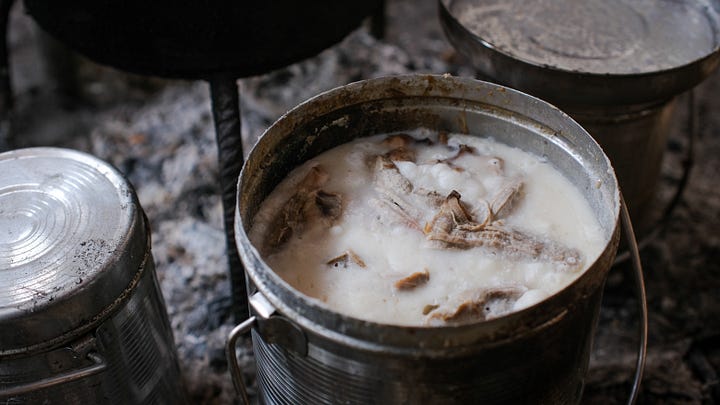

Since the war, and following a brutal ethnic cleansing of Kuki-Zos from the Imphal Valley, the community have vowed to detach themselves from what is essentially a Meitei-majoritarian Manipur. The boycotts reflect the same sentiment: they signify that the narratives being placed around food aren’t just about cuisine, that the physical and emotional damage caused by this violence cannot be healed by imposing peace and reconciliation measures, but only by finding an adequate political solution. Otherwise, like in the 1990s, an entire generation of youth in Manipur will be lost to guns, unemployment, and politics once again. In this fight for separation and self-governance, food entrepreneurs are moving the community towards autonomy of a kind that hasn’t before been seen in Kuki-Zo history, practising the ‘art of not being governed’, as the anthropologist James C Scott wrote in 2009.
For people like Haokip, producing Kuki-Zo dishes is not just a business. ‘After the conflict, it [food production] has become an emotive issue for us,’ he told me. This brought to mind what Hoihnu Hauzel, the first woman journalist and food writer from my community, once said: ‘When they know what we eat, then it’s really one step into our life, one step into our world.’ That my community still forages their vegetables and ferments what they grow goes well beyond legal documents for me. This is the passport of our indigeneity to this land.
Credits
Makepeace Sitlhou is an award-winning independent journalist based in India. She writes at the intersection of culture, politics and environment. You can find her work at www.makepeacesitlhou.com.
George AK Neihsial is a photographer based in Lamka, Manipur.
The full Vittles masthead can be found here.





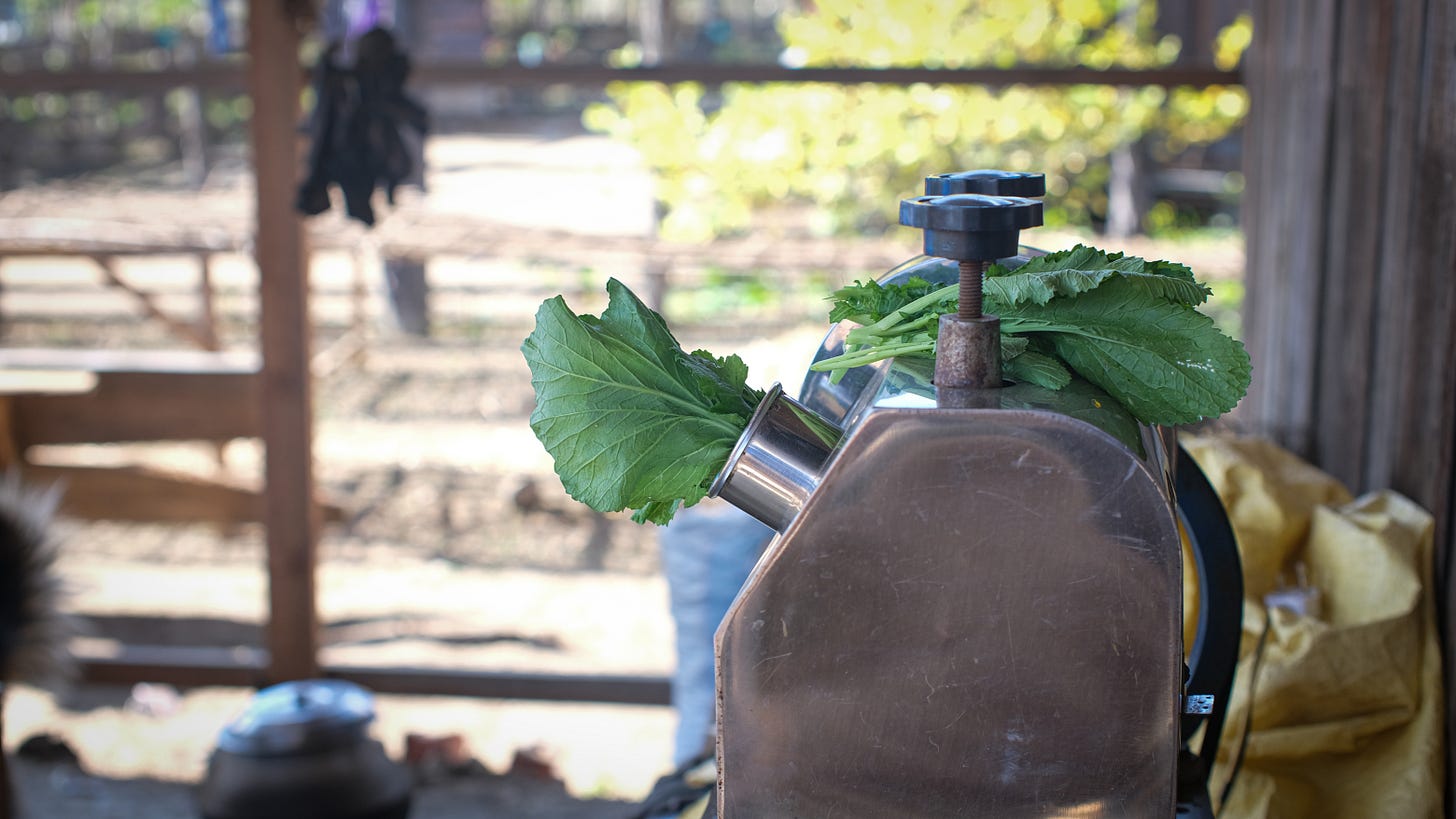
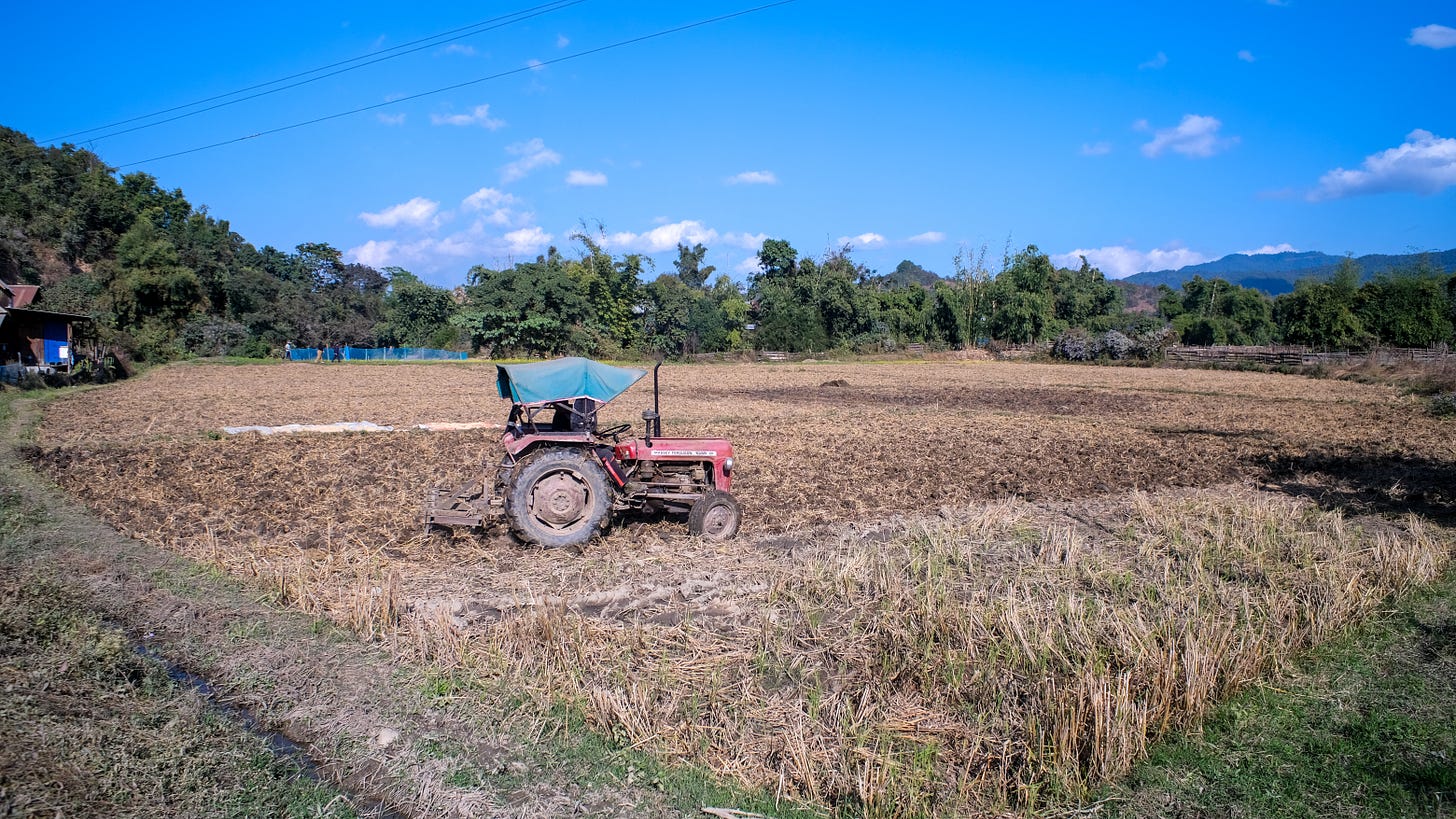
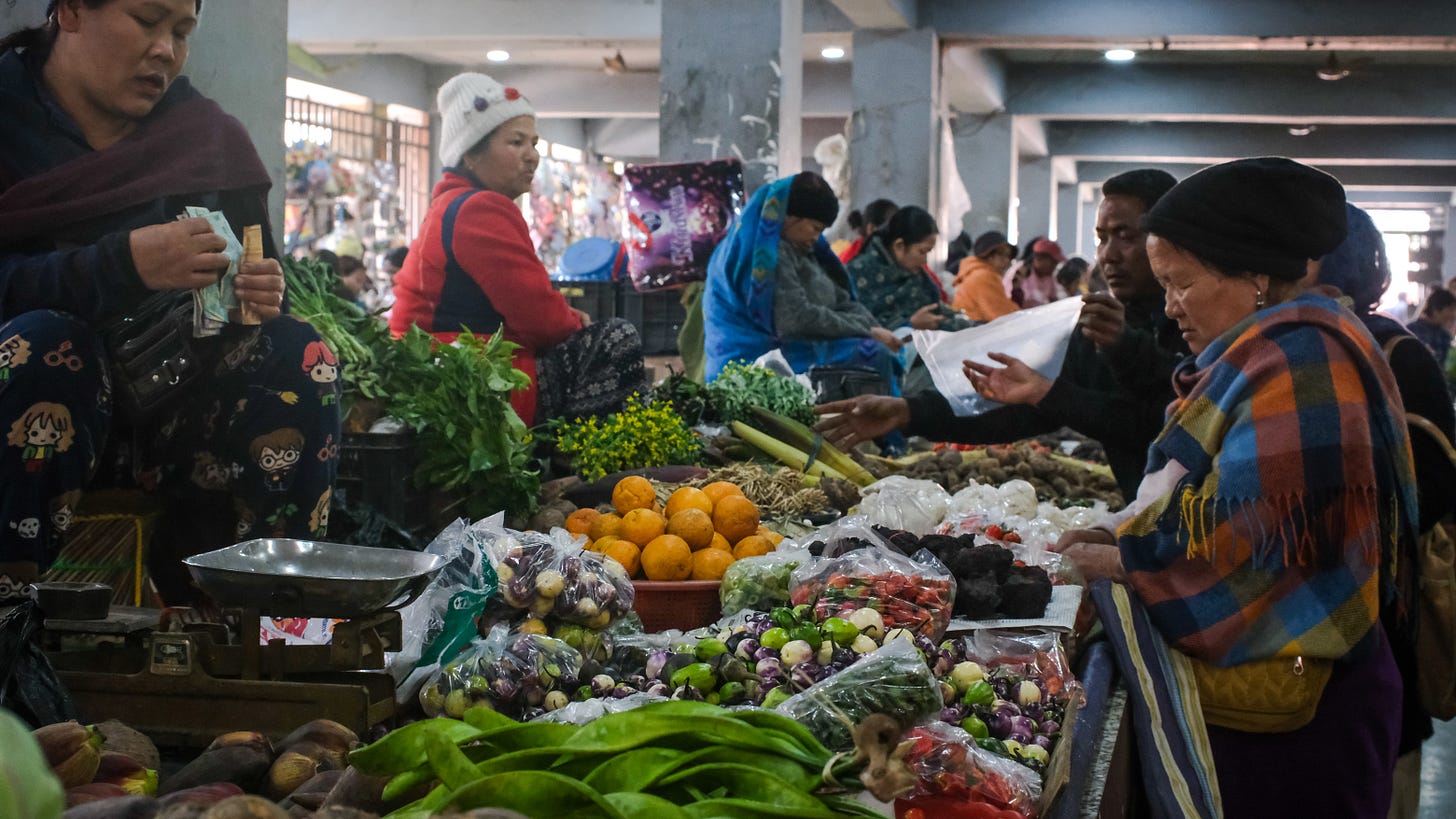


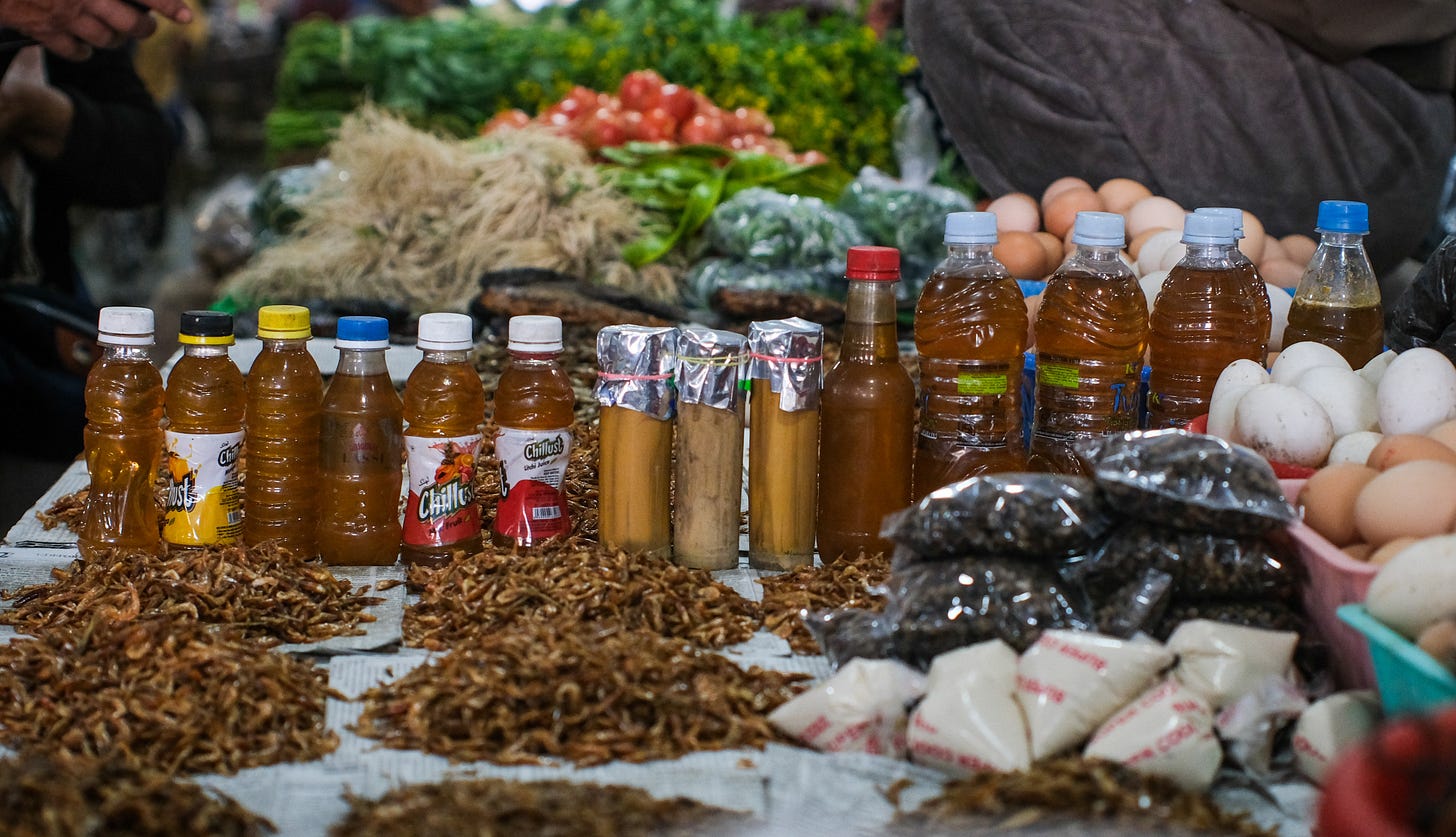
Am thrilled by the article u penned my sister.Keep the vibes and more awaiting.
Kudos to the team 👏👏💪
@kenfornataro @culturesgroup